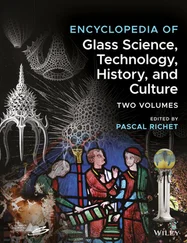John Pollen - British Manufacturing Industries - Pottery, Glass and Silicates, Furniture and Woodwork.
Здесь есть возможность читать онлайн «John Pollen - British Manufacturing Industries - Pottery, Glass and Silicates, Furniture and Woodwork.» — ознакомительный отрывок электронной книги совершенно бесплатно, а после прочтения отрывка купить полную версию. В некоторых случаях можно слушать аудио, скачать через торрент в формате fb2 и присутствует краткое содержание. ISBN: , Жанр: foreign_antique, foreign_prose, на английском языке. Описание произведения, (предисловие) а так же отзывы посетителей доступны на портале библиотеки ЛибКат.
- Название:British Manufacturing Industries: Pottery, Glass and Silicates, Furniture and Woodwork.
- Автор:
- Жанр:
- Год:неизвестен
- ISBN:http://www.gutenberg.org/ebooks/38953
- Рейтинг книги:5 / 5. Голосов: 1
-
Избранное:Добавить в избранное
- Отзывы:
-
Ваша оценка:
- 100
- 1
- 2
- 3
- 4
- 5
British Manufacturing Industries: Pottery, Glass and Silicates, Furniture and Woodwork.: краткое содержание, описание и аннотация
Предлагаем к чтению аннотацию, описание, краткое содержание или предисловие (зависит от того, что написал сам автор книги «British Manufacturing Industries: Pottery, Glass and Silicates, Furniture and Woodwork.»). Если вы не нашли необходимую информацию о книге — напишите в комментариях, мы постараемся отыскать её.
British Manufacturing Industries: Pottery, Glass and Silicates, Furniture and Woodwork. — читать онлайн ознакомительный отрывок
Ниже представлен текст книги, разбитый по страницам. Система сохранения места последней прочитанной страницы, позволяет с удобством читать онлайн бесплатно книгу «British Manufacturing Industries: Pottery, Glass and Silicates, Furniture and Woodwork.», без необходимости каждый раз заново искать на чём Вы остановились. Поставьте закладку, и сможете в любой момент перейти на страницу, на которой закончили чтение.
Интервал:
Закладка:
British Manufacturing Industries: Pottery, Glass and Silicates, Furniture and Woodwork
PREFACE
The object of this series is to bring into one focus the leading features and present position of the most important industries of the kingdom, so as to enable the general reader to comprehend the enormous development that has taken place within the last twenty or thirty years. It is evident that the great increase in education throughout the country has tended largely to foster a simultaneous interest in technical knowledge, as evinced by the spread of Art and Science Schools, Trade Museums, International Exhibitions, &c.; and this fact is borne out by a perusal of the daily papers, in which the prominence given to every improvement in trade or machinery attests the desire of the reading public to know more about these matters. Here, however, the difficulty commences, for the only means of acquiring this information are from handbooks to the various manufactures (which are usually too minute in detail for general instruction), from trade journals and the reports of scientific societies; and to obtain and systematize these scattered details is a labour and a tax upon time and patience which comparatively few persons care to surmount. In these volumes all these facts are gathered together and presented in as readable a form as is compatible with accuracy and a freedom from superficiality; and though they do not lay claim to being a technical guide to each industry, the names of the contributors are a sufficient guarantee that they are a reliable and standard work of reference. Great stress is laid on the progressive developments of the manufactures, and the various applications to them of the collateral arts and sciences; the history of each is truly given, while present processes and recent inventions are succinctly described.
BRITISH MANUFACTURING INDUSTRIES
POTTERY
Without entering into an elaborate dissertation on the antiquity of the Art of Pottery, which would be out of place in so short an article as this, I will briefly state that the practice of making vessels from plastic clays, for holding liquids and provisions, first resulted from the exertions made by man to emerge from his primary condition. It is a well known fact that vessels of clay, only partially baked, have been found, together with stone implements belonging to prehistoric times, and that those vessels, unfinished as they were, had peculiar characteristics. But supposing that this was not so, it must strike everybody that, after providing himself with those rude instruments wherewith to obtain his food and protect his life, man must have taken advantage of his power of observation to notice the property of plastic clay to retain water, and to find out to what useful purpose it might be brought for making vessels better suited to his wants, than the skins of animals or pieces of wood roughly hollowed out. If not probable, it is however not impossible, that the first man, taking in his hand a lump of soft clay, should have tried to give it a defined shape, in which case the art of pottery would be as ancient as the human race. It may have been anterior to the use of fire, for a sound and useful pottery may be made with clay hardened in the sun, as still practised in Egypt and India. At all events, it existed previous to the working of the first metal, as one can hardly understand how bronze could have been melted, without the assistance of vessels made of fired clay carefully selected. Consequently it is admitted by everybody, that this is one of the earliest of human inventions, and that the material has proved most durable. This durability, secured by the application of heat, is a very remarkable phenomenon; for while many other materials, apparently very hard, have been found unable to stand the atmospheric changes or the continuous contact with a damp soil, it was sufficient to submit this one to a very moderate heat, to be enabled to resist these various agencies for several thousands of years. This is particularly noticeable in the black Greek pottery, which, while possessing all its former appearance, can, however, be scratched by the nail or broken by a gentle pressure between the fingers. It is thus that we are indebted to the art of pottery for innumerable works of art, many of which have proved most useful in elucidating historical facts, and making us acquainted with the habits, dresses, and ceremonies of ancient peoples.
One can understand how difficult it is to decide who were the earliest potters. It is a question that archæologists have often tried to answer, but which is not likely to be ever solved. Pottery was created to meet a special want of the human race, and we find early pottery existing in almost every part of the world, in unknown America, as well as in Europe or Asia. It is, however, easier to decide which people first excelled in it, and in this respect we must give equal credit to the Egyptians and the Chinese. It is mentioned in sacred history that more than 2000 years B.C. the Egyptian potters were celebrated for their skill, and if we can believe Chinese tradition, the manufacturers in China were at this same time under the control of a superintendent appointed by the government. Unfortunately, we have very little information respecting the history of the art in China, previous to the sixteenth century; and although we have a notion of what they did and how they did it, it is wiser, with our imperfect knowledge, to abstain from speculating as to when the different sorts of Chinese ware were produced. But as regards the Egyptians, there is no uncertainty; some of their ceramic relics bear their own inscriptions, and others have been found associated with objects or monuments whose dates have been carefully ascertained. We may well believe in their skill, when we know that they were acquainted with the most difficult processes for making the bodies and glazes, and that they used the same metallic oxides for colouring their ornaments that we are now using, though often, let us acknowledge, with less success. During a period of at least eleven hundred years, from the eighteenth to the twenty-fourth dynasty, they displayed considerable ingenuity in the production of small figures, jewellery ornaments, and hieroglyphic tablets, in which several sorts of pottery mixtures and differently coloured glazes were most cleverly associated. It is from Egypt that sound principles of pottery making seem to have spread to the different nations; first to the Phœnicians, who in their turn became famous for their knowledge in the art of vitrifying mineral substances; and then to the Assyrians, who seem to have applied pottery more specially to the ornamentation of their buildings.
Greece, who shortly after received her first notions of art from the two former nations, did not devote her energies so much to improvement of material and richness of colour, as to the refined beauty of the shape and the excellence of the painting.
In pottery, the material is of little value, and it is only by the art displayed in shaping and decorating it, that its price can be increased. In this respect the Greeks proved to what enormous value it could be raised, by making it the groundwork of their art, since sums equivalent to several thousand pounds of our money were readily paid by Roman patricians for a single Corinthian vase. In this, as in the other branches of art, the recognized taste of the Greeks will never be surpassed; and if at the present time little attention is paid by collectors to their ceramic productions, it is probably owing as much to the versatility of our tastes and fancies, as to our inability of showing the articles to their advantage.
Читать дальшеИнтервал:
Закладка:
Похожие книги на «British Manufacturing Industries: Pottery, Glass and Silicates, Furniture and Woodwork.»
Представляем Вашему вниманию похожие книги на «British Manufacturing Industries: Pottery, Glass and Silicates, Furniture and Woodwork.» списком для выбора. Мы отобрали схожую по названию и смыслу литературу в надежде предоставить читателям больше вариантов отыскать новые, интересные, ещё непрочитанные произведения.
Обсуждение, отзывы о книге «British Manufacturing Industries: Pottery, Glass and Silicates, Furniture and Woodwork.» и просто собственные мнения читателей. Оставьте ваши комментарии, напишите, что Вы думаете о произведении, его смысле или главных героях. Укажите что конкретно понравилось, а что нет, и почему Вы так считаете.












![John Bruce - The Lettsomian Lectures on Diseases and Disorders of the Heart and Arteries in Middle and Advanced Life [1900-1901]](/books/749387/john-bruce-the-lettsomian-lectures-on-diseases-and-disorders-of-the-heart-and-arteries-in-middle-and-advanced-life-1900-1901-thumb.webp)